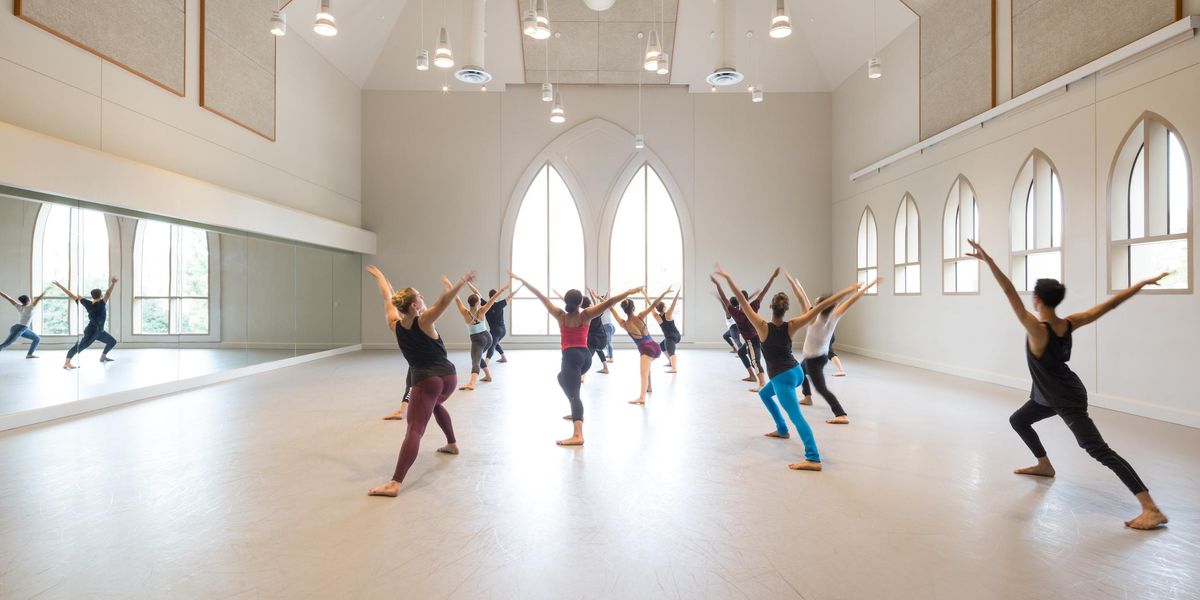Philip Glass' Bond with Dance
When I hear Philip Glass’ music, it swirls in my head and I get overwhelmed by the beauty of it. I have always felt this way about his music, and I know other dancers do too. So many in the audience were moved by his speech at the Dance Magazine Awards that I wanted to transcribe it and share it with you.
He has always been generous to dancers. About 20 years ago, I had started choreographing a group piece to his music from the film Mishima. But it was very short and I needed some music to follow it with. I was in the subway, pondering this problem, when I happened to see Philip walking by. I just went up to him, told him I was using Mishima, and asked him to suggest some music to follow that. He thought for a few seconds, then gave me the name of another piece of his, which ended up working beautifully.
You can see a snippet of Philip Glass’ speech here, as well as Damian Woetzel’s vivid description of dancing in Robbins’ Glass Pieces. And you can read about Glass’ accomplishments in dance here (scroll down) or here. But only by reading his whole speech will you understand his commitment to dance, right from the start. So, here it is:
“When I first went to Juilliard, it was 1957, and the first thing I asked myself as a 20-year-old writing music, was, Who wants this music? Who am I writing for?
“At Juilliard at that time there were two companies: The Martha Graham company was teaching there, and José Limón, and he himself was also there. Within weeks, I was writing music for dancers. Not only was I writing for them, but Louis Horst was teaching choreography at the time, so when I wrote a piece of music for dancers in the class, I had to come in and play for them too—which was actually quite scary. I was more afraid of him than anybody else.
“So I began in the dance world, and the funny thing is that it’s been with me for most of my life. Later when I was working for professional dance companies…One time I was on the road with Lucinda Childs and the company had a dance class every day. I just put on some sweat pants and went and took classes with them. I couldn’t really do it at all. But after they stopped laughing and forgot I was there, I still did it. What was I trying to do? There was no way I could do it, but I wanted to be on the stage with them; I wanted to know what it would feel like to be a dancer. It felt in a funny way that by some strange [muffled] I ended up being a composer. I used to say laughingly to my friends that I was a failed dancer who became a composer. Which is kind of a joke, and yet in another way, I thought the dance world was my great ally in the world of music.
“I think scarcely a year passed when I wasn’t doing a ballet for somebody. Not only was I writing new pieces, but I discovered that a lot of people were using the music. Sometimes someone would say, ‘I’d like to use your music for a dance; would you like to see my work?’ And I would say, ‘Oh no no no no no…just take it.’ I never felt that I could audition a dance company. I just wanted them to use the music.
“Even today, I have two dance projects on my desk right now, I haven’t started them yet, but I’m still working for dance. I would say that for me, of theater and dance and music and poetry and film, the world I’m closest to is the world of dance. I find the impermanence of dance is deeply moving. The great poets in my life have been actual people who wrote poetry—Allen Ginsburg, people like that—and the other poets are the dancers because they are the most dedicated people. The work, it disappears. We give our lives to it, and I give my music to it freely and lovingly. It’s there for the moment that it lives in and…it’s gone. It’s the most profound dedication to the arts that I know.
“Thank you Dance Magazine and all of you here, thank you for what you’ve given to me.”
And he has given us so much. Not only has he created numerous transcendent works for ballets like Tharp’s In the Upper Room, Lucinda Childs’ Dance, Lar Lubovitch’s North Star, and of course Einstein on the Beach. But more than each individual ballet, he has helped define the aesthetics of our era just as surely as Stravinsky defined his. Glass’ looping, repetetive structures are not only hypnotic to the ear, but they open up a kind of spirituality that is very much of our time.




